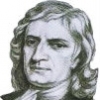-
Posts
171 -
Joined
-
Last visited
Content Type
Profiles
Forums
Events
Everything posted by Jeremy0922
-

Electromagnetic radiation and steady state of hydrogen atom
Jeremy0922 replied to Jeremy0922's topic in Speculations
How do we understand the ground state of the H atom is steady? -

Electromagnetic radiation and steady state of hydrogen atom
Jeremy0922 replied to Jeremy0922's topic in Speculations
At the ground state, whether the electron produces radiation? -
Good question! Although I don't know wether there is the technology to do it, but we could apply the magnetic field by moving charges to explain magnetic properties of the magnets and Van der Waals force. I don't kown how to explain for these two phenomenon by quantum mechanics. There is not the technology which is able to observe the electron moves around the proton.
-
By QM, angular momentum.is only the interpretation about quantum number from the solution of Schrödinger equation, but I do not wether it means angular momentum in physics. By classical theory, the ground orbit of the electron is a circle. As we known, the solution about the hydrogen atom is the greatest and outstanding work for quantum mechanics.
-
WKB approximation is only a mathematical method or semiclassical calcultion for finding approximate solutions for the quantum sysytem, the reliability of results depends on whether the Schrödinger equation of the quantum system is correct. By my opnion, Schrödinger equation could be used to describe the resonance of the orbit in atom, eigenvalues of energy from the equation's solutions decide the eigenvalues of orbit radius. For the H atom, we can get eigenvalues of orbit radius of the ground and resonate states by solution of Schrödinger equation, and the elelctron moves along one of the eigen-orbits which obey the control of the Lorentz force. In addition, H atom is only at the ground orbit for the isolated state, and could be at high eigen-orbit by outer resonate field.
-
Hi, ajb, thank you to discuss with you again. 1. The Schrödinger equation can not reduce to trajecctory equation for the moving electron in the center field; 2. Bohr model is the theory closed to sucess for H atom. But we must proof A) there is a ground orbit (or state) for H atom, and B) the linear spectrum is caused by resonance of the ground orbit, and C) the steady state Schrödinger equation of the H atom could be deduced from A) and B) I think the answer or explanation could be found for your questions in my prevous topics and paper: 1. Electromagnetic radiation and steady state of hydrogen atom 2. Why don't we build the model of hydrogen atom independently by QM? center of mass coordinate of the H atom Nice to meet you again, Swansont. please see my quote above to answer ajb.
-
For a hydrogen atom at ground state, the electron is moving around the proton (nucleur of H atom). The frequency ν0 and the energy E0 of the electron in the H atom at the ground state should consistent with quantum hypothesis, that is : E0=hν0 Where h is Planck's constant . As we known, the period T and the frequency of the electron must obey the following relationship : T=1/ν Clearly, the electron is moving around the proton with a constant period T0, and T0= h /E0 According to the concept of period, the moving electron should be at the same position at the time after a period T0. That is easy for us to understand by classic concept and theory, but I don't know How to understand the periodicity of the electron in the hydrogen atom by quantum mechanics, would you like tell me ? Thanks !
-
You could find answers for your almost questions in my paper and the previous threads on SFN. http://www.scienceforums.net/topic/44948-electromagnetic-radiation-and-steady-state-of-hydrogen-atom/
- 71 replies
-
-1
-
Classical theory not only can explain electromagnetic phenomenon caused by charged particles, but also prove the steady ground orbits with non-zero energy, and Schrodinger equation could be deduced from the resonance of the ground orbits, which could be applied to explain spectrum of atom. By the solution of Schrodinger equation, Quantum mechanics could interpret the structure and spectrum, but cannot explain classical electromagnetic phenomenon. Therefore, I think classical theory is better than QM for the treatment of charged particles system, including atomic, molecular, and solid-state structure.

